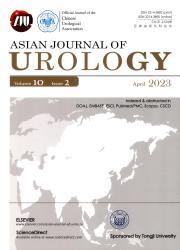虚拟和增强现实系统及三维打印肾脏模型--指导肾癌术前规划的新趋势
IF 2.4
3区 医学
Q2 UROLOGY & NEPHROLOGY
引用次数: 0
摘要
本研究旨在探索三维(3D)技术,包括虚拟现实、增强现实(AR)和三维打印系统在医学领域的应用,尤其是在肾脏介入治疗癌症方面的应用。病人专用的三维打印解剖模型可用于术前规划、术中指导和手术教育。结果特定患者的三维打印解剖模型有多种应用,如术前规划、术中指导、受训者教育和患者咨询。虚拟现实是用计算机生成的三维环境取代现实世界,而 AR 则是将数字创建的感知叠加到现有的现实环境中。三维建模技术的进步引发了人们对其在肾癌肾部分切除术中应用的浓厚兴趣。三维打印也称为增材制造,是根据计算机辅助设计或数字三维模型构建三维物体。利用三维打印的术前肾脏模型有利于制定手术计划,对肿瘤与重要解剖结构的关系进行更可靠的评估,为手术做好更充分的准备。AR 技术通过将 CT/MRI 图像投射到实时腹腔镜视频上,使外科医生能够直观地看到患者特定的肾脏解剖结构及其与周围器官的空间关系。将特定于患者的三维数字模型融入医疗保健中可增强最佳实践,从而改善患者护理,提高患者满意度,并为医疗保健系统节约成本。本文章由计算机程序翻译,如有差异,请以英文原文为准。
Virtual and augmented reality systems and three-dimensional printing of the renal model—novel trends to guide preoperative planning for renal cancer
Objective
This study aimed to explore the applications of three-dimensional (3D) technology, including virtual reality, augmented reality (AR), and 3D printing system, in the field of medicine, particularly in renal interventions for cancer treatment.
Methods
A specialized software transforms 2D medical images into precise 3D digital models, facilitating improved anatomical understanding and surgical planning. Patient-specific 3D printed anatomical models are utilized for preoperative planning, intraoperative guidance, and surgical education. AR technology enables the overlay of digital perceptions onto real-world surgical environments.
Results
Patient-specific 3D printed anatomical models have multiple applications, such as preoperative planning, intraoperative guidance, trainee education, and patient counseling. Virtual reality involves substituting the real world with a computer-generated 3D environment, while AR overlays digitally created perceptions onto the existing reality. The advances in 3D modeling technology have sparked considerable interest in their application to partial nephrectomy in the realm of renal cancer. 3D printing, also known as additive manufacturing, constructs 3D objects based on computer-aided design or digital 3D models. Utilizing 3D-printed preoperative renal models provides benefits for surgical planning, offering a more reliable assessment of the tumor's relationship with vital anatomical structures and enabling better preparation for procedures. AR technology allows surgeons to visualize patient-specific renal anatomical structures and their spatial relationships with surrounding organs by projecting CT/MRI images onto a live laparoscopic video. Incorporating patient-specific 3D digital models into healthcare enhances best practice, resulting in improved patient care, increased patient satisfaction, and cost saving for the healthcare system.
求助全文
通过发布文献求助,成功后即可免费获取论文全文。
去求助
来源期刊

Asian Journal of Urology
UROLOGY & NEPHROLOGY-
CiteScore
4.00
自引率
3.80%
发文量
100
审稿时长
4 weeks
期刊介绍:
Asian Journal of Urology (AJUR), launched in October 2014, is an international peer-reviewed Open Access journal jointly founded by Shanghai Association for Science and Technology (SAST) and Second Military Medical University (SMMU). AJUR aims to build a communication platform for international researchers to effectively share scholarly achievements. It focuses on all specialties of urology both scientifically and clinically, with article types widely covering editorials, opinions, perspectives, reviews and mini-reviews, original articles, cases reports, rapid communications, and letters, etc. Fields of particular interest to the journal including, but not limited to: • Surgical oncology • Endourology • Calculi • Female urology • Erectile dysfunction • Infertility • Pediatric urology • Renal transplantation • Reconstructive surgery • Radiology • Pathology • Neurourology.
 求助内容:
求助内容: 应助结果提醒方式:
应助结果提醒方式:


